Pet Box Turtles
A great pet for beginners since they don’t grow large (not for young children though). Box turtles on average only grow to 5 to 8 inches long (13-20cm).You can keep a box turtle in a 20 gallon tank (76 litters) or a couple of them in about a 60 gallon tank (227 litters) They are non-aquatic and don’t need a pool or pond if you don’t have the space; that’s not to say the wouldn’t enjoy this in their turtle tank habitat or living space.
Even though box turtles don’t grow large or require a large habitat, they do live an average of 50 year and some might even live to 100 years old. Just realize that if you buy a turtle or pet tortoise, it will be a pet that will be around for a long time. This can be interpreted two ways. It’s a negative in the sense that if a child out grows their pet and loses interest, the pet might get the care it needs to stay happy. On a positive thought, it’s never easy to see a pet die, so the long lifespan of a box turtle will mean you won’t have to say goodbye for a very long time.
Physical Characteristics of a Box Turtle
- Hinged plastron (bottom shell)
- Dome like carapace (top shell)
- Maximum length of 5-8 inches (13-20cm)
- First central scute set at or above 50*
- Short low to the ground feet
- Tough scaly skin that resembles that of a tortoise
What is a Box Turtle?
Are box turtles actually turtles or are they tortoises? The answer to this question is not easy to answer but, yes and no; they are both turtles and tortoises. In the United States, they are referred to as box turtles and in Europe they are called box tortoises. Within scientific classification, these turtles that have been grouped into the generic name box turtle/tortoise are actually Terrapenes and Cuora which fall into the Emydidae and Geoemydidae families respectively (The popular water turtle, the Red Eared Slider falls into the Emydidae family). These families fall into a super family called Testudioniodae which also include Testudinidae, tortoises. All of these then fall into the Testudines or what are called turtles. So to sum it up, sure, box turtles are both but more so turtles. Furthermore, does it really even matter, not really; they are some really neat creatures and can make for great pets.
Natural Habitat of Wild Species
Box turtles come from a wide range of habitats all over the world. They habitats are typically located in and around humid wooded areas that have adequate sources of water like, streams, lakes or ponds. In the United States you can spot wild box turtle up and down the East Coast and as far over as the state of Texas. However, their natural habitat is shrinking as a result of encroaching human activities and development. Furthermore, due to the food and pet trade, some of these species of box turtles are becoming rare and have even been placed on the endangered species list. This is especially the case in Eastern Asia where these turtles are hunted and captured to be sold as food, non-traditional medicines or other rituals.
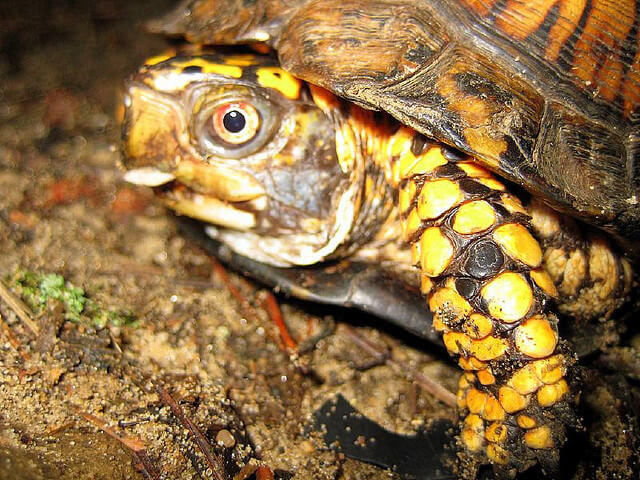
Captive Bred or Captured Pets
For the reasons above, if you come across a turtle or tortoise in the wild, don’t take it home and make it your pet (it’s illegal). Wild box turtles as a whole are not gong to be as healthy as those bred in captivity. When you take a turtle or tortoise out of its natural habitat, you might be taking one that has diseases or parasites. Additionally, you can get salmonella if you handle a wild box turtle. Be respectful of these little creatures; enjoy them, photograph them and observe them but don’t take them with you.
If you have just done this and are here to find out what type of box turtle you have, we urge you to take it back to where you found it and if you really want a turtle, acquire one through the proper channels. Look for reputable breeders or pet stores that only sell box turtles that have been bred in captivity. Avoid what can be described as puppy mills for turtles. These are places that house a large amount of animals in cramped and uncomfortable living situations. Finally, if you really want a hard to come by box turtle, your only choice might be to get a captured one; just make sure it was captured legally and that the species is not endangered.
Look at animal shelters to find your new pet. Many people find that they can’t care for these turtles or the simply don’t want them anymore and will drop them off in their local shelter.
Terrapene Box Turtle Types
Common Eastern
T. c. carolina
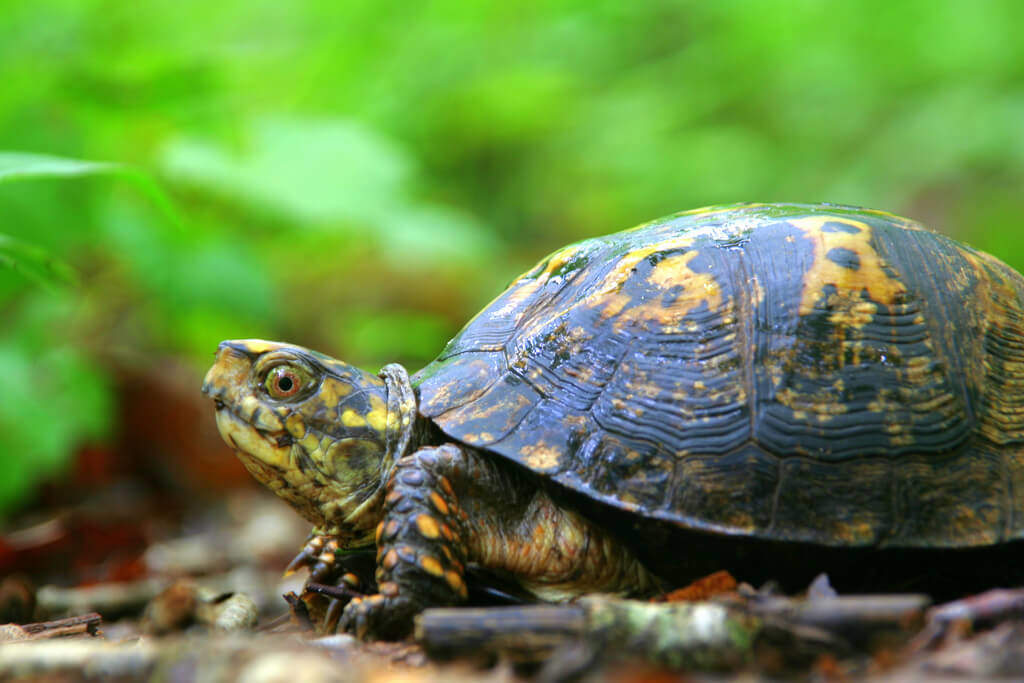
Three Toed
T. c. triunguis
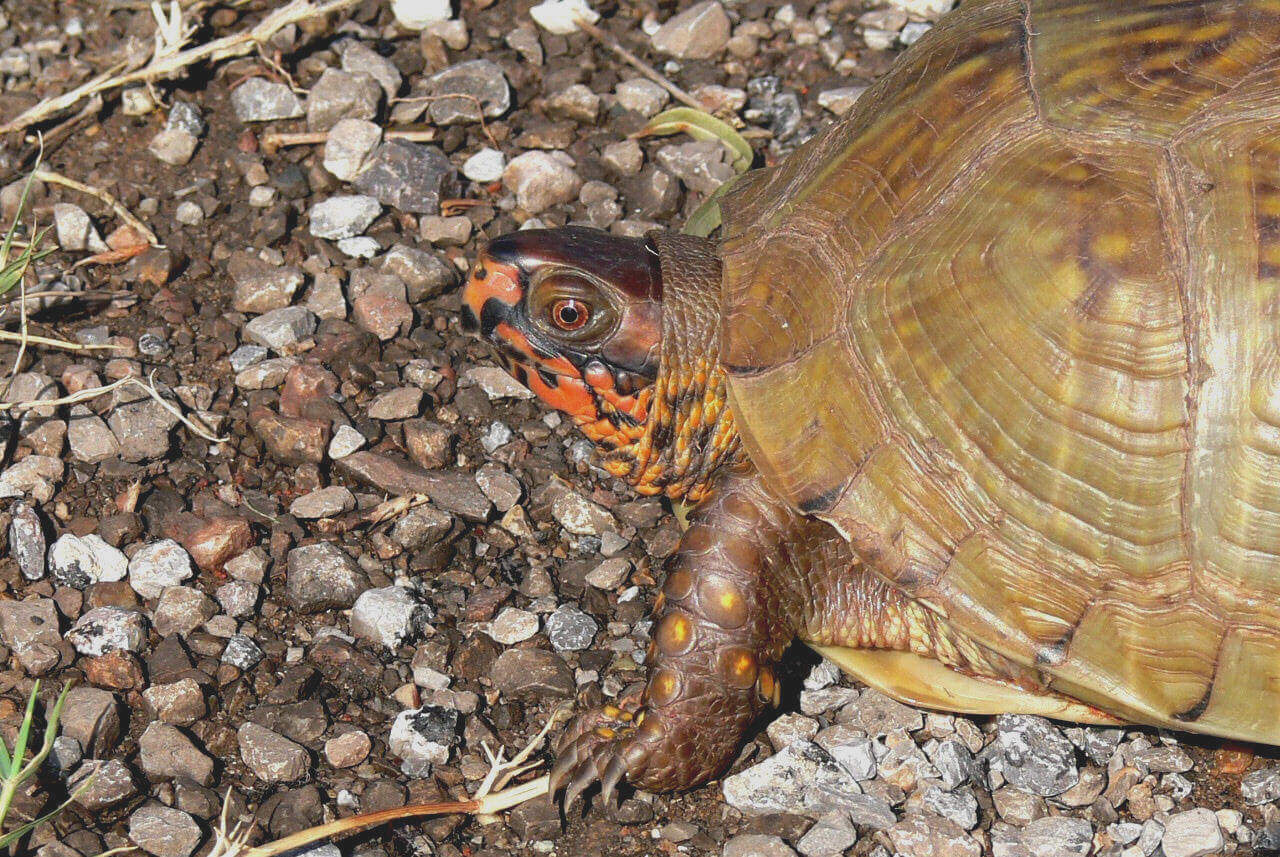
Gulf Coast
T. c. major
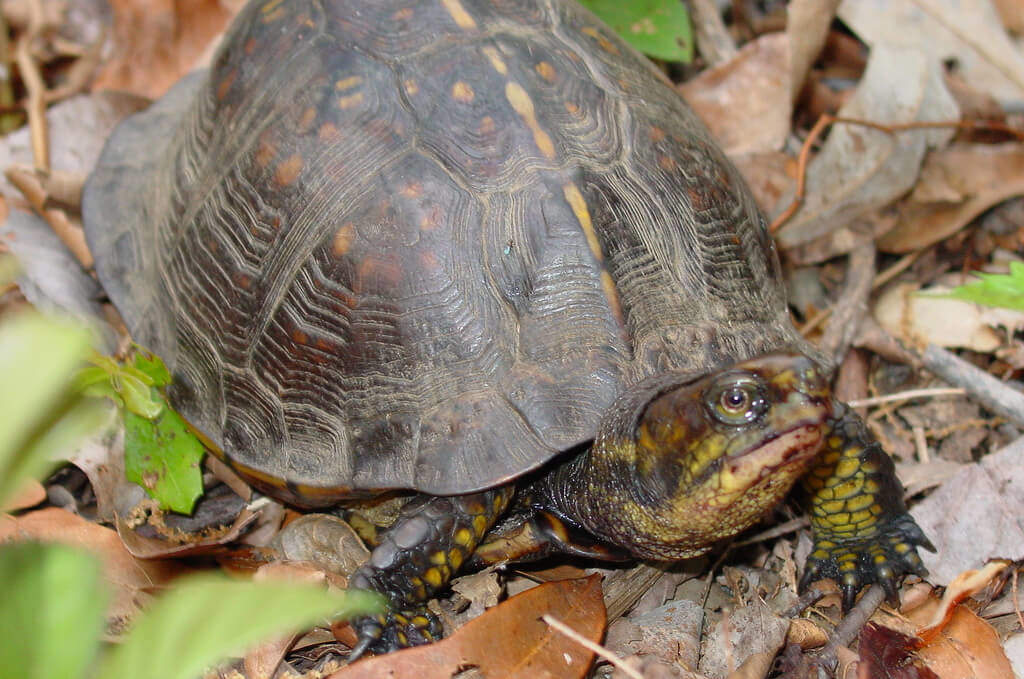
Florida
T. c. bauri
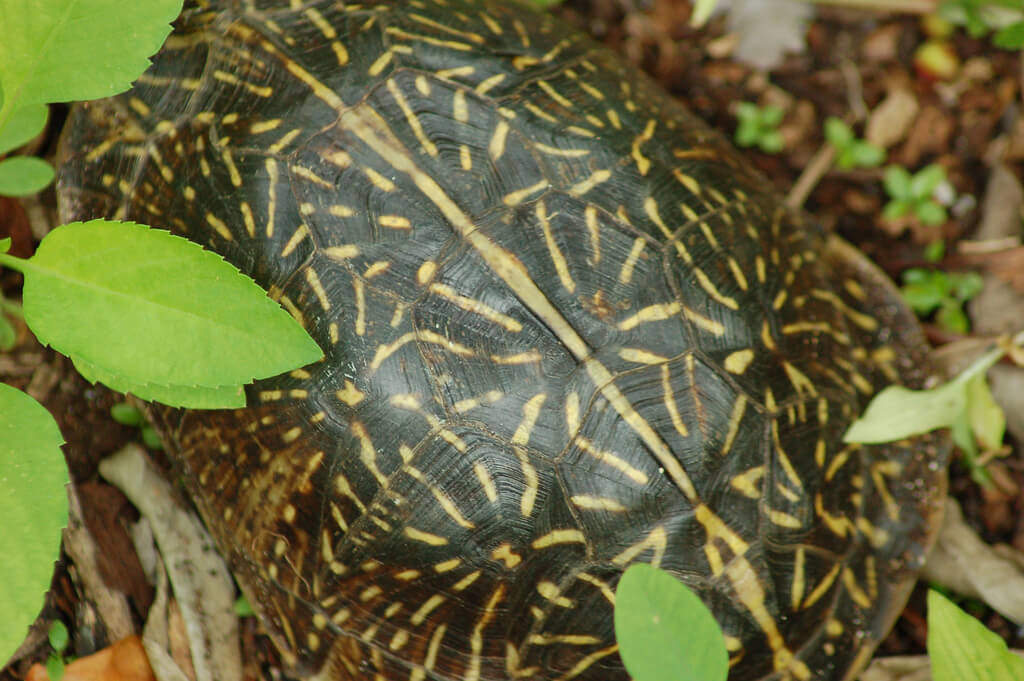
Mexican
T. c.mexicana
Found in the woodland areas of parts of northern Mexico, this larger box turtle grows to about 7.5 inches (19 cm). The shell is elongated and dome shaped with a solid color of browns to tans. The skin of this type of box turtle is a brown with yellow or orange colored patches and may contain blues on the face (this is found in males). The back feet of the Mexican Box has three toes. Due to restriction on importing and other factors, this turtle is not readily available as pets.
Yucatan
T. c. yucatana
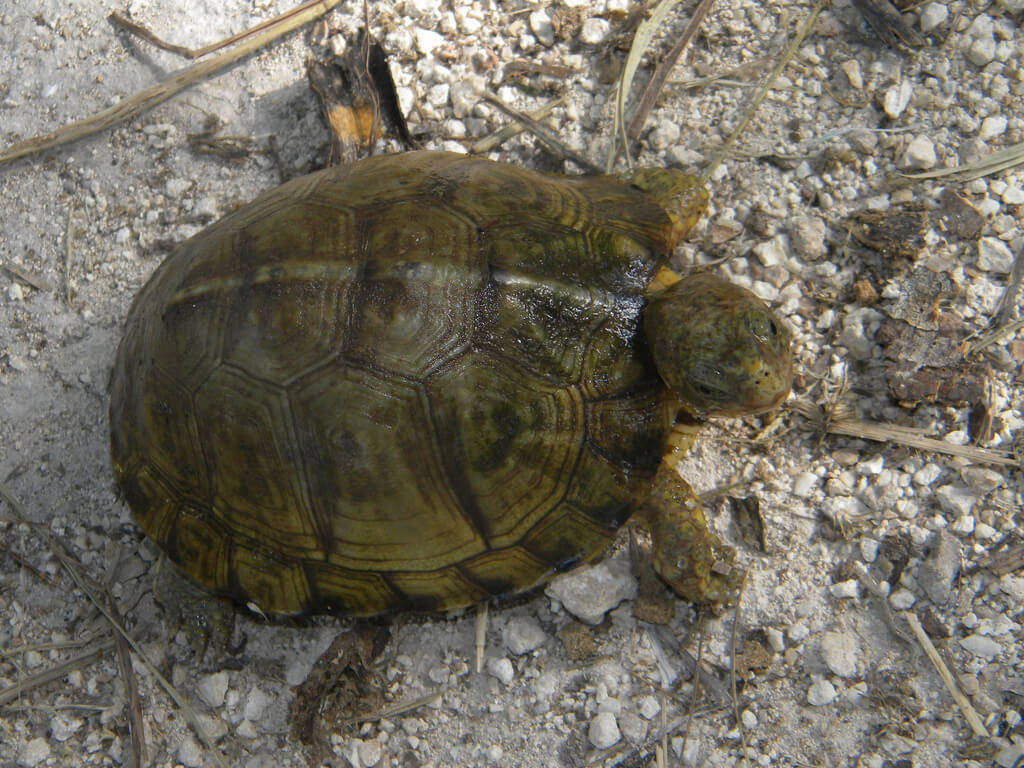
Western Ornate
T. o. ornata
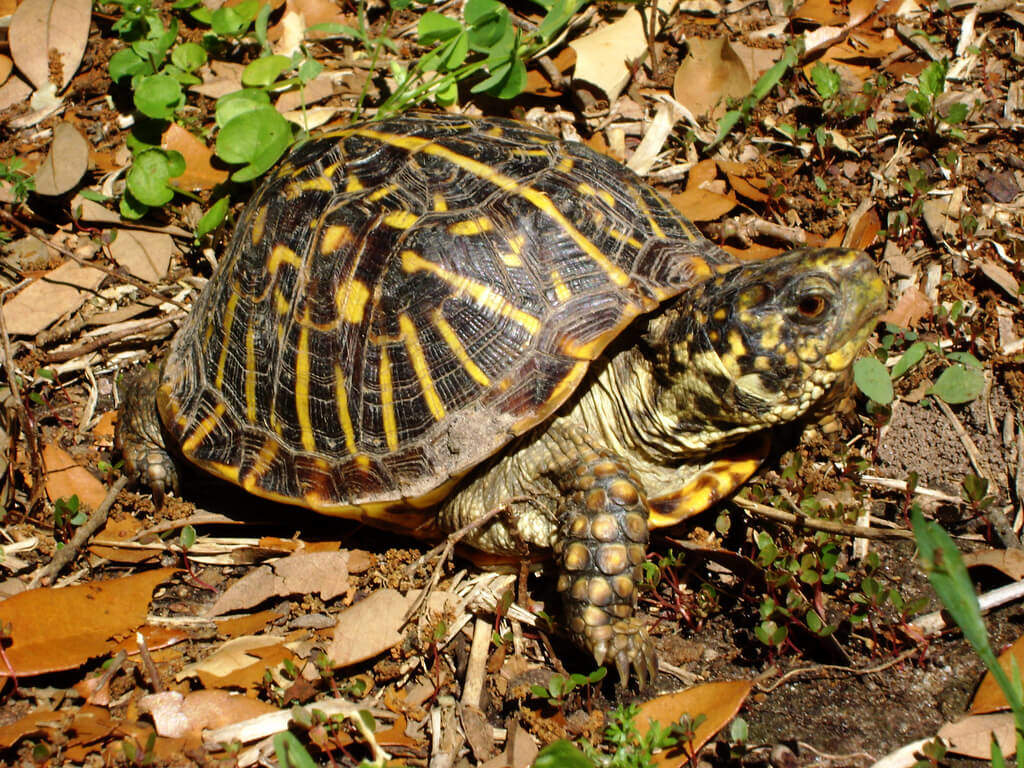
Desert Ornate
T. o. luteola
The Desert Box is a subspecies or the Ornate species. However, this subspecies is more adapted for a semi-arid environment. You can find these turtles burrowing beneath thick brush where it’s cooler during the heat of the day throughout the Southwest or North America. The color of the Desert Box is like the Western but is more yellow in color as a whole. The two subspecies are not easy to distinguish between.
Spotted
Terrapene nelsoni
The home range of the Spotted Box is down in Mexico around the Sanora and Sinoloa regions. A fully grown Spotted can reach up to 5 to 6 inches (14-15cm). Its shell, head and legs have yellow spots. However, the males not be spotted at all. The males also have redish eyes, larger heads and scales on their front legs.
Coahuilan
Terrapene coahuila
Coahulian Box turtles can be found in the Cuarto Cienegas region of Mexico. It’s an aquatic water turtle so it will be found around desert springs areas. It’s a medium sized species that can grow up to 6-7 inches (15-18cm). It has an elongated shell that is dark in color. Males have brown irises while females have more gray.
Cuora Box Turtle Types
Malyan Southeast Asian
C. amboinensis
This species of box turtle is found living in tropic areas of Southeast Asia, the Philippines and Sula . It’s also the most common Asian Box turtle that is found int he pet trade. When fully grown, these turtles can reach upwards of 8 to 10 inches (20-25cm). The carapace is dark olive to brown color. The most distinct characteristic this turtle has is a band of yellow stripes going back along the head. It’s feet are webbed which make it easier for to navigate in the ponds, marshes, rice patties and rainforest where it eats mainly aquatic plants.
Three-Stripped Chinese
C. trifasciata
The Chinese Three Striped are found up around the around Hong Kong of China. It’s a semi aquatic box turtle so it mainly lives in the upland streams. It can reach up to 8 inches (20cm). The top shell has a low pitch and is brown with three dark stripes that run from front to back. The top of this breeds head is strong yellow color and a dark line runs along the face. These guys likes to eat bugs, snails, frogs and even fish.
Yellow Margined Chinese
C. flavomarginata
Found in the highlands of Southern China and Vietnam. This breed grows from 5 to almost 8 inches (12-20 cm) with a low pitched dark brown carapace with a yellow stripe down the back. But it gets its name from the the yellow edges on the dark colored plastron. It too has yellow stripes along the side of its head.
Flowerback Indochinese
C. galbinifrons
The Flowerback or Indochinese is the most terrestrial of all the Asian Box turtle species, living in the woodlands of Southern China and down into to Vietnam. They grow up to 7-8 inches (17.8-20.3cm). Their high domed carapace has various brown/tan lines and dashes. On the middle scutes, running front to back, it will often have a tan colored thick line while the top and bottom scutes will be darker in color.
Keeled Vietnamese
C. mouhotii
The Keeled Box turtle can be found in the Chinese island of Hainan, sections of southern China, Vietnam, Thiland and Myanmar. It will grow to about 6-7 inches (15-18cm). The tan to brown shell is high pitched but flat on the top with a visible central keel and two lateral keel lines. The marginal scutes are jagged like the teeth or a saw and is the most recognizable characteristic on this turtle species.
Photos by: themarque, sneezypb, goingslo, 38686613@N08, wiredwitch, maxorz, nakrnsm
Reviewed By: Tim Winter

Tim Winter has a strong affection for pets and wildlife. His years of experience caring for various types of pets has led him to share his knowledge with others on the best practices in pet care. Tim holds a Bachelor of Science from the University of Oregon School of Journalism and Communications.

Box turtles are delightful little creatures that make wonderful pets. Great share! Really nice informational post.
I found a turtle in my fenced in back yard and don’t know how it got in as my fence is a very tall privacy fence. I don’t want to harm this turtle and do not mind it being in my yard but I want to care for it properly. It is brown with a very round shell, and has yellow spots on its arms and has little tiny claws. How do I care for it and what kind is it, if you can tell by my skimpy details? Thank you, Sharon Green
Does a captive gulf coast need everyday sources to uva/uvb to survive? Or is it just a bonus?
Is it better to keep him enclosed outside or inside next to a window?
It’s highly recommended for its health. If you don’t you need to give it some supervised time out doors or in a secure outdoor pen.
My husband found a box turtle and brought it home to our 4 year old. He was going to release it but she really likes it. Is it safe for her to hold? I thought turtles carry salmonella.
Wild box turtles can carry salmonella. If you really want to keep it, I would say just release it where your found it and go buy a captive bred one. This way you know you are getting a healthy one and you are not taking one out of its natural environment. Many captured turtles don’t live as well as one that were bred in captivity. Also, note that a box turtle can live for a long time. So if you don’t want the responsibility, you should probably pass on getting one. That said, they are pretty low maintenance and don’t require as much attention as say a cat or a dog needs.
If I live in Texas and the temperatures are in the 90s but i Had a pond the size of a bathtub with fresh water (ps what would I need to do to the water) could a red eared slider live in these conditions. There would be some shade and sun in the outdoor pen too
The air temperatures are good especially since you do have a shade area. But make sure the water temp is good too. See this section on Red Eared Slider Living Requirements. You may need to build a fence to keep your turtle from running off or being preyed on by a predator. Since your pond is not large the turtle won’t be able to escape any threats as easy. In terms of the water, I might add some dechlorinator to remove any chlorine. take a look at the garden pond setup for more tips and advice.
And a basking area they have to have land so make sure some rocks are added and a basking stop too so it can dry it’s she’ll too
how long a baby water turtle can be kept outside
If the baby is at least a few inches, when the temperatures are in the 60s and you have a secure pond to keep predators out, you can keep it outside. If the turtle is really small, you should keep an eye on it when it’s outside. In the wild, baby turtles are outside all the time but not all of them survive so you can improve your chances when you raise them inside until they can fend for their own. See this post on raising a baby turlte
are box turtles harmless? Do they have any dangerous features such as biting or sharp claws?
I would like to know because I want to adopt a turtle and would like it to be safe.
They have small claws like toenails and can bite if you stick you hand in front of their mouths but for the most part, box turtles are harmless. They would much rather eat bugs and worms than snack on your fingers. Adopting is a good way to go.
What if we find a box turtle and need to know what kind of habitat and care it needs for it to survive. We have searched and searched but can’t find anything;should we put it in water,and have an area of land for it,or just have land,and no water other than it to drink? 😀
Did you find it in the wild? First I just want to say that you should avoid taking these guys out of their natural habitat and captured turtles don’t live as long as ones that were bred in captivity. The captured ones tend to have difficulty adjusting. However, to answer your question, box turtles need mainly land to live on but they do enjoy a soak in a shallow watering hole. They prefer a moist and high humidity environment. Where did you find it and what markings does it have, I might be able to tell you what it is. Also, see the section on box turtle types.